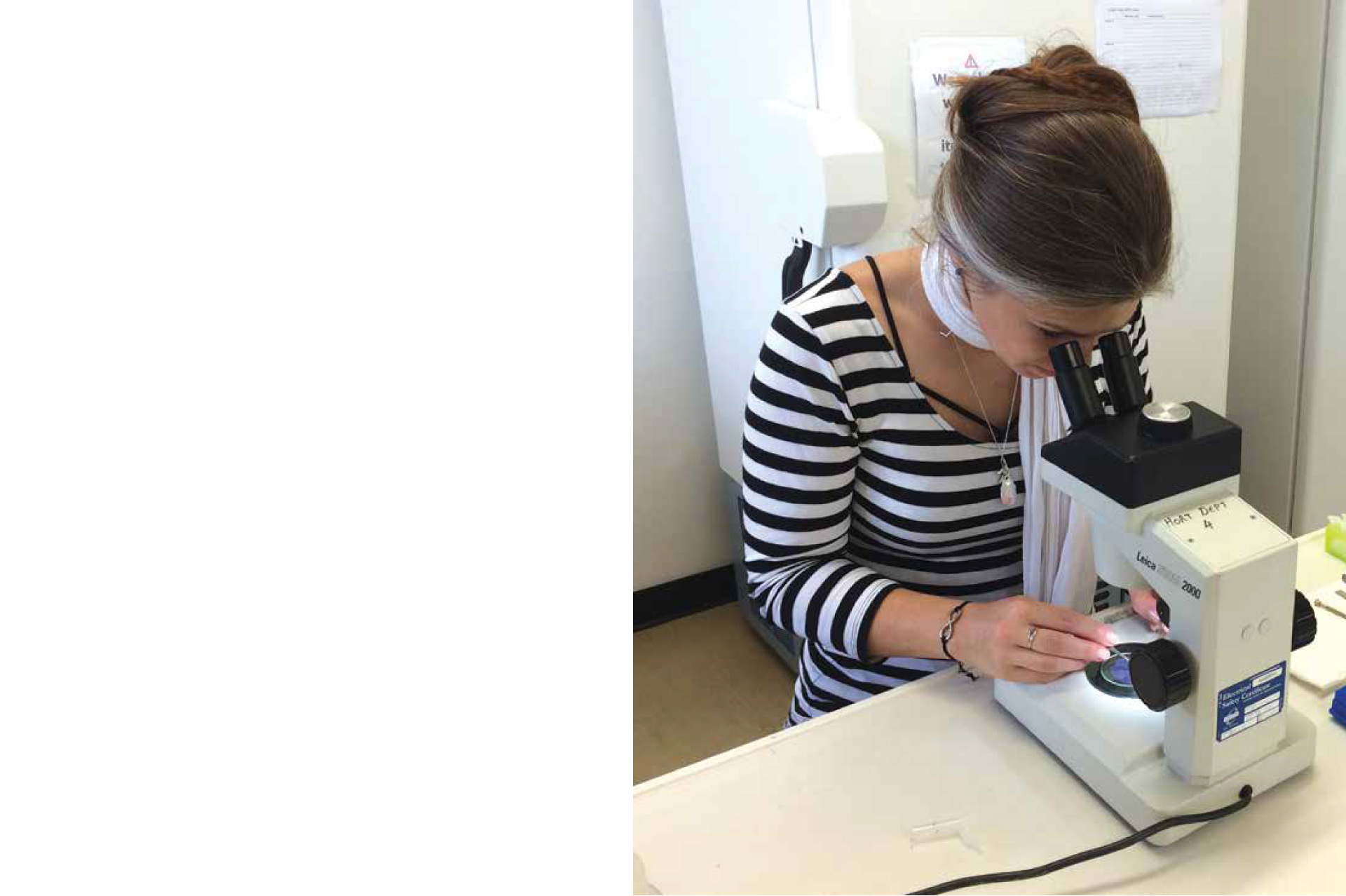[custom_headline type=”left” style=”margin-top: 45px;” level=”h2″ looks_like=”h5″ accent=”true”]Molecular techniques are being used to investigate how symbiotic microbial communities may be influencing insect invasiveness[/custom_headline]
For millions of years, New Zealand and the Pacific Islands have been extremely isolated, which has led to the development of native ecosystems with unique biodiversity. But with the increase in human travels and exchanges of goods in past centuries, this isolation is not quite what it used to be.
New species have been arriving en masse, some of which can have devastating effects on native biodiversity and also on agriculture. We call them vermin, pests or invasive species. The ones attacking crops are mainly insects and they can cause millions of dollars of damage to the New Zealand agriculture industry.
Their impact can also be very detrimental to communities whose livelihoods rely primarily on local agriculture and in areas where biosecurity resources are limited, which is the case for a number of Pacific Islands.
[x_pullquote cite=”Lefort” type=”left”] “Some species are pests due to the microbes that live in symbiosis in their gut”[/x_pullquote]
Traditionally, insect pest species are controlled with pesticides. But pesticides may also affect species that are beneficial for crops, such as those that improve the nutrients found in soil or that feed on the pests themselves. It is therefore essential to develop efficient tools to identify these detrimental species and targeted measures to control them before they reach damaging population sizes, but without affecting the non-pest species.
[custom_headline type=”left” style=”margin-top: 45px;” level=”h2″ looks_like=”h5″ accent=”true”]How can we control insect pest species without affecting other beneficial insects?[/custom_headline]
What makes a species beneficial or detrimental has been the subject of much debate. Here at Unitec, a group of scientists thinks that some species are pests due to the microbes that live in symbiosis in their gut. Most plants produce toxins and other chemicals to deter insects, but pest species still manage to eat and digest the plants. Just like gut microbes help humans digest food, some microbes are helping insects to digest plants. Recent advances in microbiology have highlighted the crucial role of gut microbiome in insect growth, development and environmental adaptation to their hosts.
In the case of invasive insects, it is possible that the contribution of the microbes goes beyond this, and also helps the insect to ‘overcome’ the toxic chemicals that plants produce to protect themselves.
[custom_headline type=”left” style=”margin-top: 45px;” level=”h2″ looks_like=”h5″ accent=”true”]The MADII project[/custom_headline]
Using modern molecular analyses, it is possible to compare the types of microbes that live in the guts of pest and non-pest insect species. The aim of the MADII project (Microbiome As Driver of Insect Invasiveness) is to use molecular tools to determine the role that gut microbes play in digesting food and handling plant defence chemicals.
What researchers are looking for is a particular set of microbes that would only be present in the guts of pest species and not in beneficial species. If they could identify this ‘invasiveness signature’, new biological control solutions that target those microbes, rather than the insect itself, could be developed. Without their special gut microbes, pest species are likely to be much less of a problem, and this would help reduce the need for pesticides. Such solutions would also ensure the preservation of the biodiversity of beneficial insects occurring in the ecosystem in question.
[x_pullquote cite=”Lefort” type=”left”] “Without their special gut microbes, pest species are likely to be much less of a problem, and this would help reduce the need for pesticides”.[/x_pullquote]
Because Unitec is primarily a tertiary institution, the researchers working on this project wanted it to also be an educational science project. MADII is facilitated through a newly established UNESCO UNITWIN network (University Twinning and Networking Programme) that links New Zealand tertiary institutions with others from the Pacific Small Island Developing States (PSIDS), and aims at enhancing these institutions’ capacities through resources, knowledge sharing and collaborative work in education and natural sciences.
[custom_headline type=”left” style=”margin-top: 45px;” level=”h2″ looks_like=”h5″ accent=”true”]What has been done so far[/custom_headline]
The project started in January this year with support from Unitec through the Strategic Research Fund. The team comprises eight Unitec staff and students as well as collaborators from three other institutions across New Zealand (Bio-Protection Research Centre, Massey University and Waiariki Institute of Technology) and from the University of the South Pacific in Fiji.
To test the research hypothesis, two model species have been identified and chosen to carry out the study in New Zealand, while collaborators in Fiji are currently investigating the best species model to use in their country.
The invasive Scarab Grass Grub Costelytra zealandica and its close congener but non-invasive species C. brunneum have already been sampled in the North and South Island. The second model comprises the introduced and invasive Black Field Cricket (sampling completed) and the New Zealand native Small Field Cricket for which the team is working at identifying collection sites.
The guts of over 100 of these insects have been dissected and stored at extremely low temperatures to preserve their DNA, while waiting to be prepared for molecular analyses. The team is hoping to get the results from the molecular analyses of the New Zealand species in early September, and those from the Fijian species by the end of the year.
A new website/research platform has also been launched to facilitate the collaboration between New Zealand and Fiji: http://lefortmc.wix.com/madii. Progress on the project can be monitored on the website, and tutorials about molecular techniques and insect dissections will be made available for the general public and to support the learning of the tertiary students involved in the project.
Contact
Dr Marie-Caroline Lefort
mlefort@unitec.ac.nz
